King John: Magna Carta, rebellion and myth
King John sealed the Magna Carta, but is remembered as one of England's worst rulers.
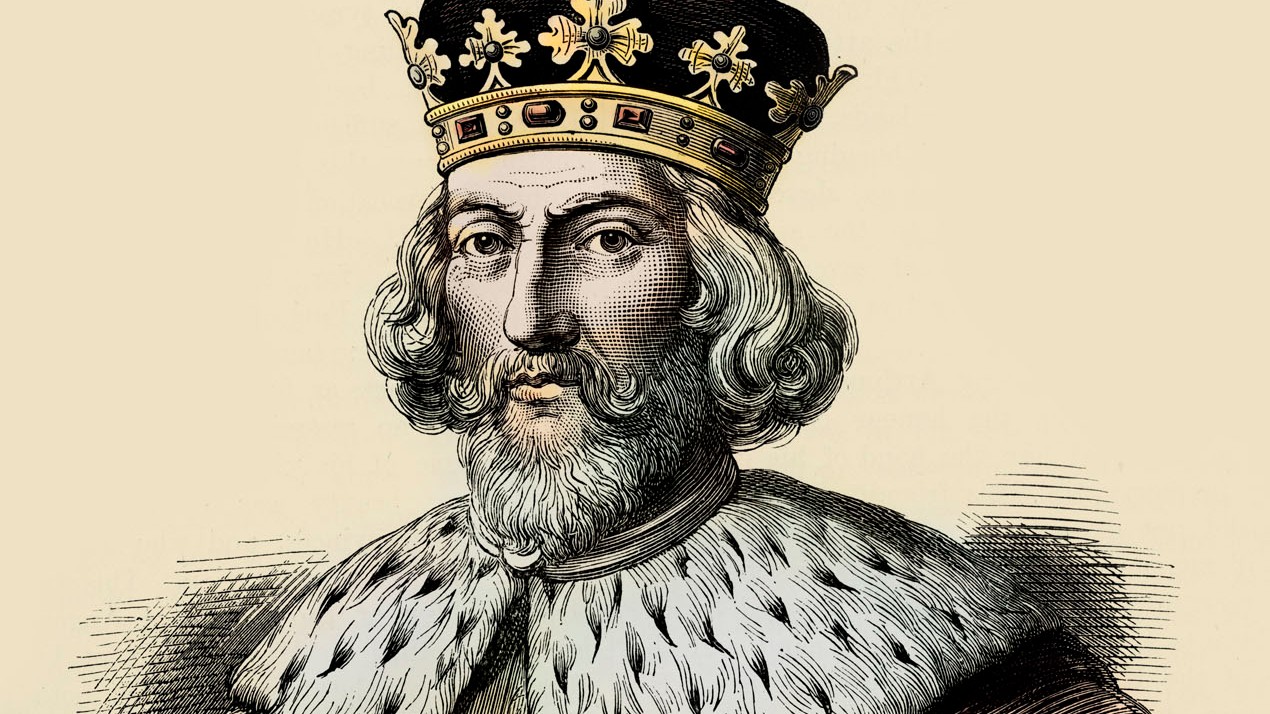
King John was the ruler of England from May 27, 1199 to Oct. 19, 1216, succeeding his brother Richard "The Lionheart". John is best known for sealing the Magna Carta, which was the first step towards a constitution in the United Kingdom and a source of inspiration for democratic movements that followed. However, he also drew England into a bloody civil war when he reneged on the agreements made in the Magna Carta and was widely hated by contemporary chroniclers.
John, King of England, was the last surviving son of Henry II and Eleanor of Aquitaine when he ascended to the throne as the fourth Plantagenet monarch. The House of Plantagenet would go on to rule England for 300 years, making it the longest reigning royal house in the country's history.
However, under John, the Plantagenets lost significant portions of territory, especially in France. It is in part thanks to failures like that in his reign that John was poorly thought of in his own own era, leading to him being depicted as a villain in stories like Robin Hood.
However, the picture of King John is not as simple as it might appear according to some modern scholars. "With the passing of time, it's very easy to write simplistic caricatures of long-dead historical figures such as John, portraying them as good or bad according to our own biases and standards. Nothing is ever that simple," Nick Barratt, who has a PhD in history from King's College London, wrote for All About History magazine.
King John and his family
John was born in 1166, and would be the youngest of Henry II's eight legitimate children with Eleanor of Aquitaine. As the youngest son with three older brothers ahead of him in the line of succession, John was not expected to become king and was very unlikely to inherit much from his powerful parents.
According to historian Stephen Church, author of "King John: England, Magna Carta and the Making of a Tyrant" (PAN, 2016), it was Henry II that gave John the nickname "John Lackland" which was a, "less than supportive jibe," indicating that he did not expect his son to control much territory in his future.
However, the territory held between Henry II and Eleanor of Aquitaine was extensive, stretching from the Pyrenees (south western France) in the south to the border of Scotland in the north. How this land would be inherited by their competitive sons would prove to be a point of contention for the family.
Get the world’s most fascinating discoveries delivered straight to your inbox.
According to Barrett, the eldest surviving son, Henry, would become king of England (in an unusual turn of events, while his father was still alive), Richard would inherit Aquitaine from his mother, Geoffrey married the heiress of Brittany bringing that land into their orbit and the daughters were to be married off for political influence around Europe.
John was likely to control some portion of Normandy and Anjou and Ireland.
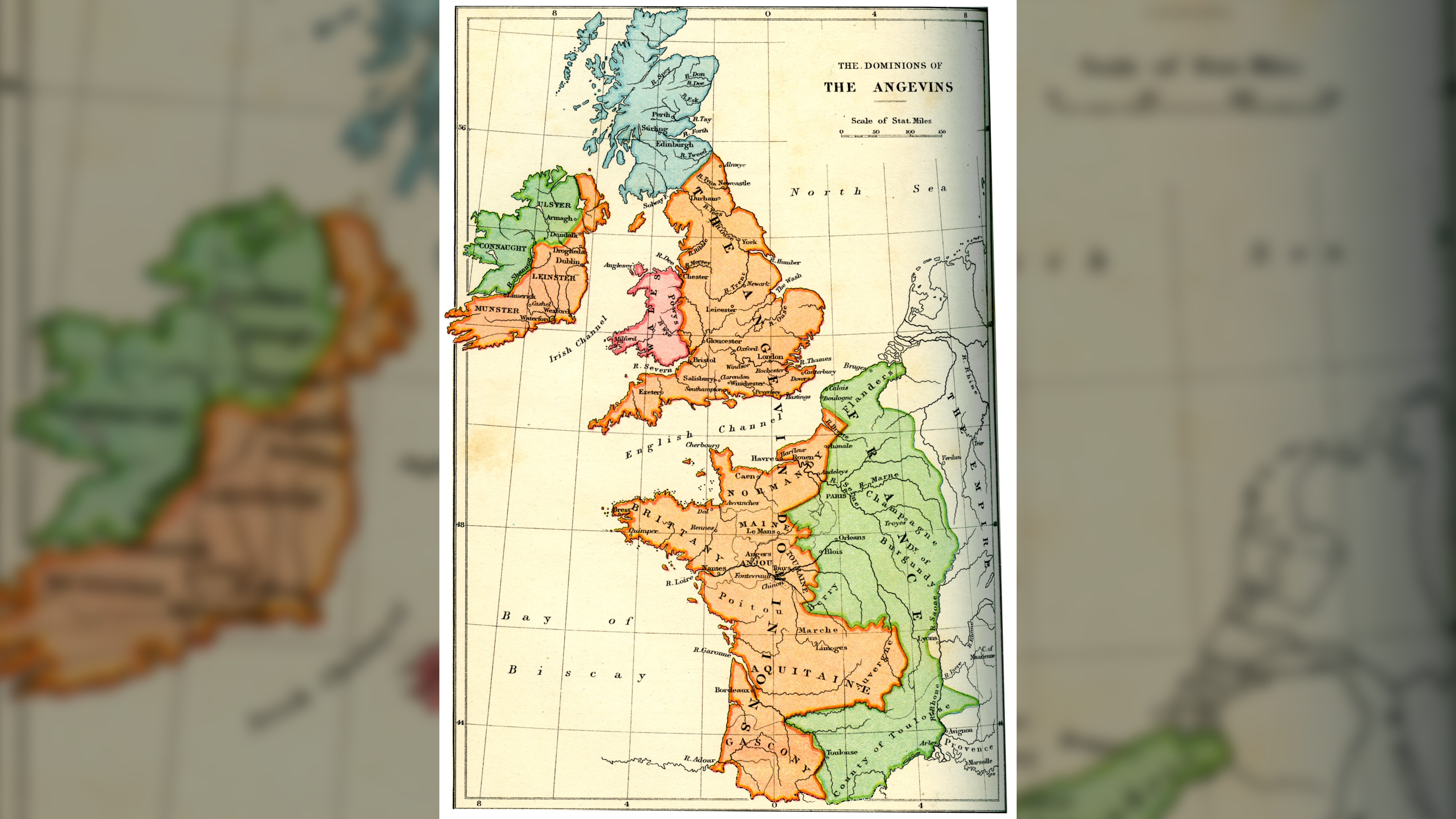
With so much land in France, this also caused increasing tensions between Henry II and Louis VII, and the French king is said to have played into the familial tensions in England to drive a wedge between father and sons.
"Simmering tensions between father and sons erupted into open war in 1173, fueled by the Capetian king of France Louis VII," wrote Barrett. "While Henry II defeated the coalition of forces ranged against him and was reconciled with his children, the underlying issues never disappeared. The young Henry died in 1183 having taken up arms against his brother Richard, whereupon Henry II reassigned England, Normandy and Anjou to Richard and gave Aquitaine to John."
However, Richard was unwilling to give up Aquitaine to his younger brother on the grounds that he had no military or administrative experience. "Richard, having fought for eight years to impose his authority upon Aquitaine, would not surrender it for the uncertain authority proposed by Henry's scheme.
Therefore, John was charged by his father to lead an army into Richard's territories. Aged only 15, John was no match for Richard, even having joined forces with their brother Geoffrey of Brittany," wrote Graham E. Seel, author of "King John: An Underrated King" (Anthem Press, 2012).
In 1184, Henry II, having returned to the throne after the death of Henry the Young King, called his sons together to reconcile their differences. Richard would remain the Duke of Aquitaine, but John was knighted and would become Lord of Ireland. He was sent with 300 knights to establish his control of the island.
John's first taste of power
John arrived in Ireland in 1185 with his knights, along with cavalry, archers and around 60 ships. He had originally been named as Viceroy of Ireland by his father in 1177, perhaps with an eye to giving him greater authority in the future. However, his experience in Ireland did not go well.
While some contemporary and near-contemporary sources accuse John of being abrasive and antagonistic towards the Irish aristocracy, creating unnecessary tension with the ruling families, Seel points the finger of blame at Hugh de Lacy, the Constable of Dublin and Lord of Meath for encouraging the Irish lords to resist John's rule.
"Probably at last 20 years senior to John, it is reasonable to speculate that Hugh de Lacy looked upon the young John as an upstart, and duly became emboldened to resist," wrote Seel. John was met with a guerilla resistance to his attempts to enforce his control militarily and was forced to return to England.
"John lacked the resolve to make his rule in Ireland a reality. He was back in England in time for Christmas. The English commentators were disappointed. They saw in John's return a failure to manage his resources correctly," wrote Church.
John would get a second chance to prove himself in Ireland when he became king.
John Vs. Richard the Lionheart
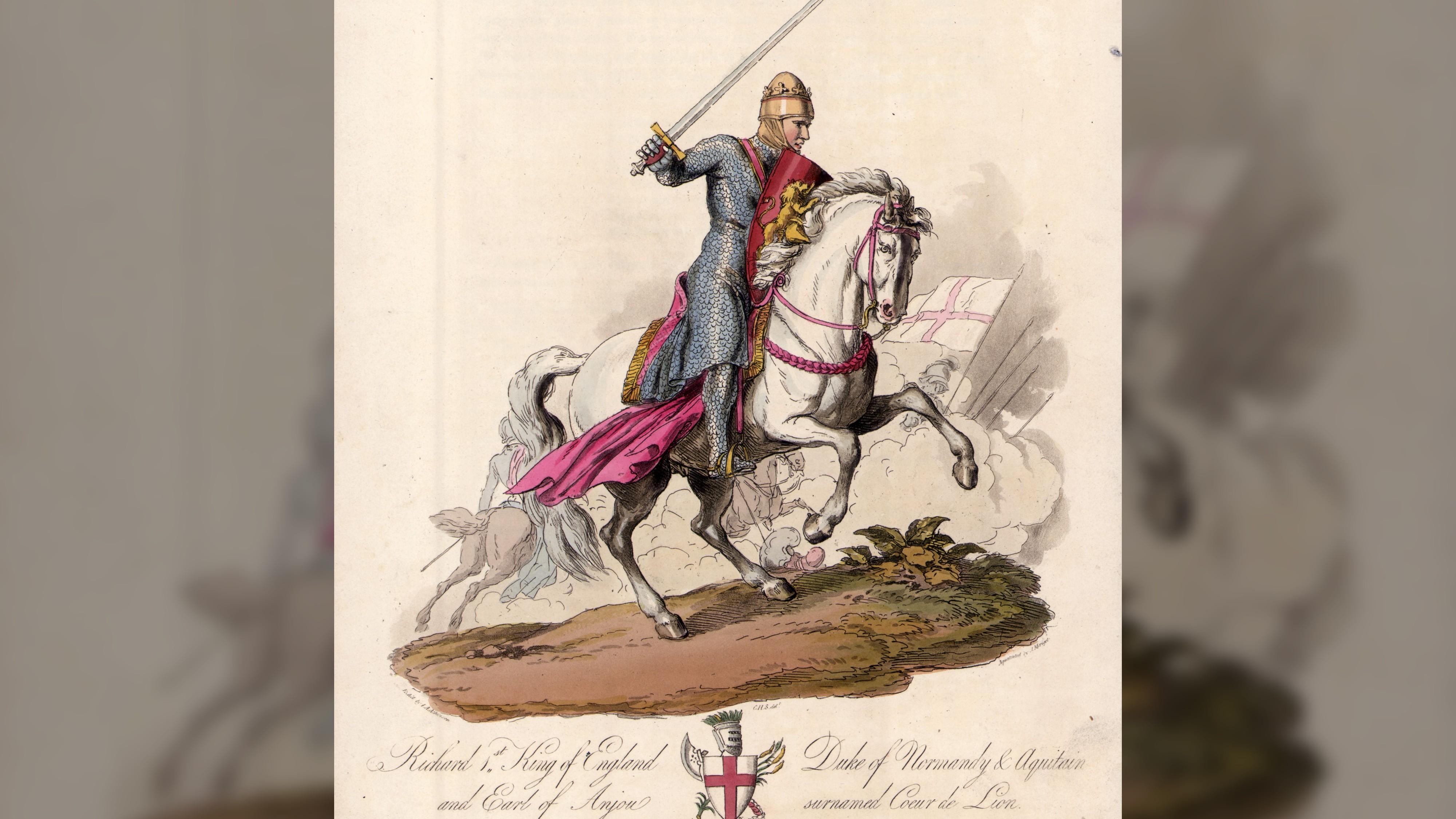
In 1186, Geoffrey died suddenly at the age of 27, possibly in an accident, although accounts differ. This came at a time when Geoffrey had allied himself with the new king of France, Philip, against Henry II.
Philip turned to Richard and convinced him to raise an army against his father in 1187. According to Barrett, the war proved to be humiliating for Henry who was forced into a peace in 1189 and took to Chinon Castle injured and ill.
"Henry asked to see the list of rebels who had turned against him, at the top of the list was John's name – he had switched sides at the last minute when he saw that his father's position was hopeless. The betrayal of his youngest son was the final straw," wrote Barrett.
Henry II is said to have died the following day on July 6, 1189.
Richard I was now king and while he had raised the rebellion against his father, the last-minute switch of John to his cause did not endear him to his younger brother.
So, when Richard looked to lead the Third Crusade in the Holy Land, he did not want John left in charge of the kingdom in his absence.
"As a precaution against this risk, Richard gave control of government in each of his realms to trusted officials and refused to clarify who his successor would be should he fail to return home," wrote Barrett. "It may well have been sensible to keep John away from the reins of power, but such a visible snub only fueled John's sense of injustice and provoked the behavior Richard was trying to prevent."
John tried and failed to assert his authority in Richard's absence, but was resisted by the king's loyal supporters at court. However, when Richard was captured and imprisoned on his way back to England in Dec, 1192, John allied with Philip of France, exchanging territory for the French king's favor.
Without local support, John was chased out of England to Normandy when Richard finally returned in 1194. The brothers would reconcile, but Richard stripped his brother of most of his possessions and titles, save for his title of Lord of Ireland. "John was, once again, Lackland," wrote Seel.
John as king
On April 6, 1199, Richard the Lionheart died suddenly on campaign while suppressing a revolt in France. He had been hit by a crossbow bolt and died from the resultant wound becoming infected.
Despite their history, John had been named as Richard's heir. From the start, there were seemingly concerns among the barons of England about having John ascend to the throne.
"On hearing that John had been named as Richard's heir, two of the late king's most influential officials, William Marshal and Hubert Walter, debated possible alternatives. Walter's initial reaction was to support the claim of Richard's nephew, Arthur of Brittany," wrote Barratt. However, the pair agreed to back John as having the stronger claim.
With his coronation on May 27, 1199, John "Lackland" was now one of the most powerful men in western Europe. His early years appear to have been successful too, with a peace agreement with his former ally Philip Augustus, king of France in 1200.
"Contemporary chroniclers praised John in comparison with his brother's bellicose nature, particularly the way Richard had shipped English silver across the channel to spend on Norman castles and mercenaries, conveniently forgetting that it was John's recklessness that gifted key lands to Philip and necessitated Richard's campaigns of reconquest," wrote Barratt.
The treaty also made the relationship between the English crown and France more defined, making John a vassal of the French king, which would weaken his standing in the long run, according to Barratt.
Philip would ultimately strip John of his control of Normandy, Anjou and parts of Aquitaine in the years to come, forcing John to retreat back to England in 1203 and setting the stage for unrest to come for John's reign.
King John and the Magna Carta
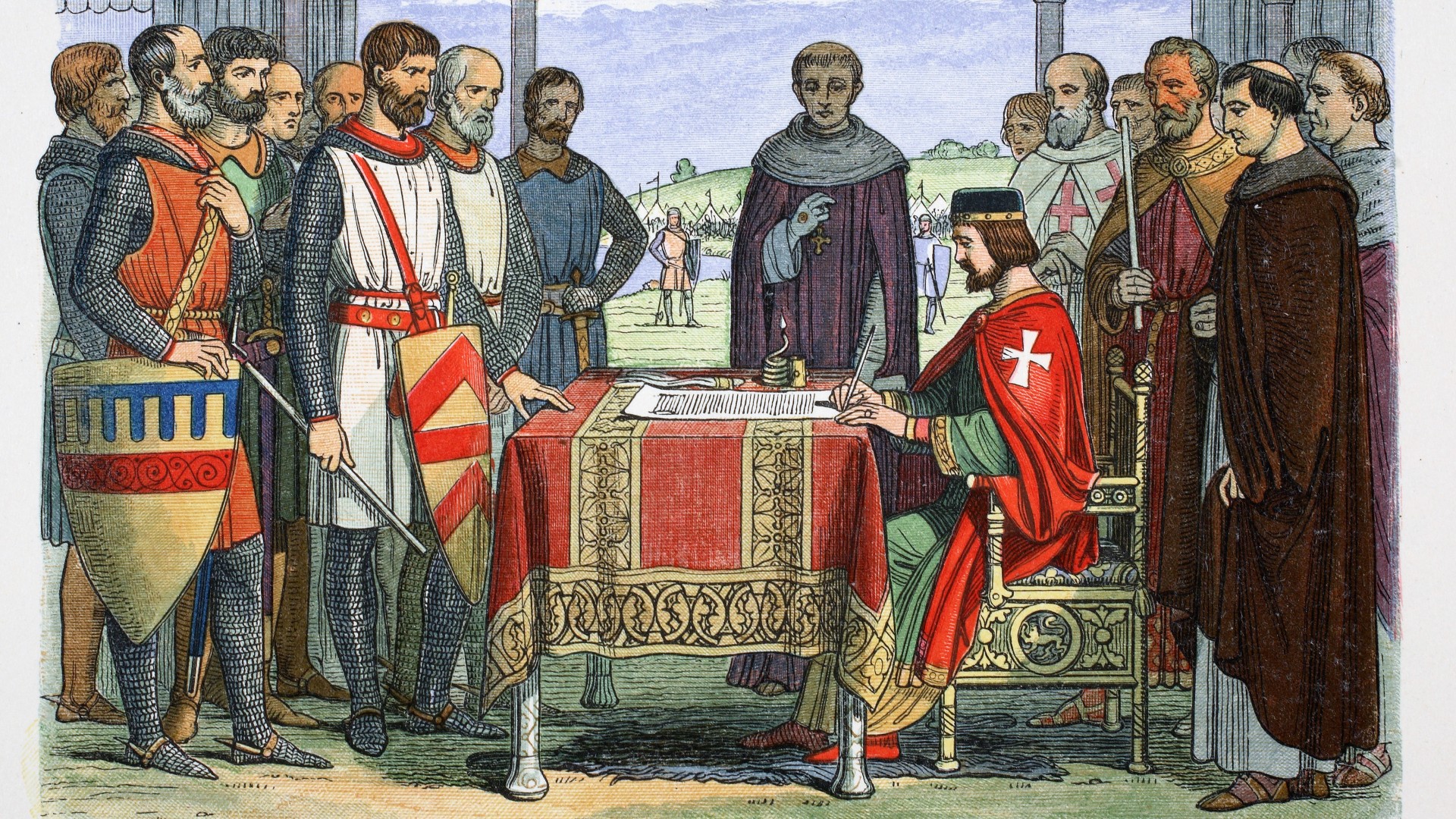
Back in England, King John instituted a number of taxation reforms and introduced new levies to draw vast sums of money to the throne. These included what we would now recognize as customs duties and income tax, but also more punitive penalties 'for the good of the king' on brains who were suspected of being disloyal, according to Barratt.
"Ruling by fear was not a tactic designed to win hearts and minds, and John's reputation was sullied further by accusations of seducing the wives and daughters of his nobles, though much of the evidence seems to relate to his first marriage," wrote Barratt. John also feel out of favor with the Vatican when he refused to accept Pope Innocent III's recommendation of archbishop of Canterbury.
"As a result, the imposition in1208 of an Interdict by Pope Innocent had been a severe sentence on all of John's subjects. Interdict suspended all celebration of the sacraments with the exception of baptizing infants," wrote Dan Jones in "In the Reign of King John" (Apollo, 2020). In response, John seized church property.
Ultimately, John made peace with the Pope by bowing before him in 1213 and making England a papal fief with a formal agreement called the Bulla Aurea or Golden Bull. While this appears to have upset some back in England, according to Barratt, it also locked Innocent III in as an ally against Philip and John's other enemies at home and abroad.
The barons of the north of England were increasingly turning against John and rebelling against his rule. In 1214, as John amassed an army to challenge Philip once again in France, many refused to support an expedition to the continent, claiming their allegiance to the crown only extended as far as England's borders. Defeat in France saw John return chastened once again and the local barons emboldened to make demands, committing him to change on June 15, 1215.
"These demands were eventually hammered out into a charter, which was endorsed by the king at Runnymede in 1215 – a document we now know as Magna Carta," wrote Barratt. The Magna Carta consisted of 63 provisions such as stating no one was above the law, that property disputes should be settled in court and that everyone had a right to a fair trial.
The Magna Carta has gone down in history as an important document in the articulation of principles of personal liberty, limited monarchy and restrained government that would continue to be explored in the centuries to come, especially during the Enlightenment.
"Magna Carta exercised a strong influence both on the United States Constitution and on the constitutions of the various states," according to the Library of Congress. However, John quickly looked for a way out of following its edicts and looked to the Pope for aid.
"On August 24, Innocent condemned and invalidated the Magna Carta, on the grounds both that settlement of any dispute about the conduct of government pertained to the pope as overlord, and that John had been coerced into acquiescence," wrote Christopher Harper-Bill in "King John: New Interpretations" (Boydell Press, 1999).
Civil War and death
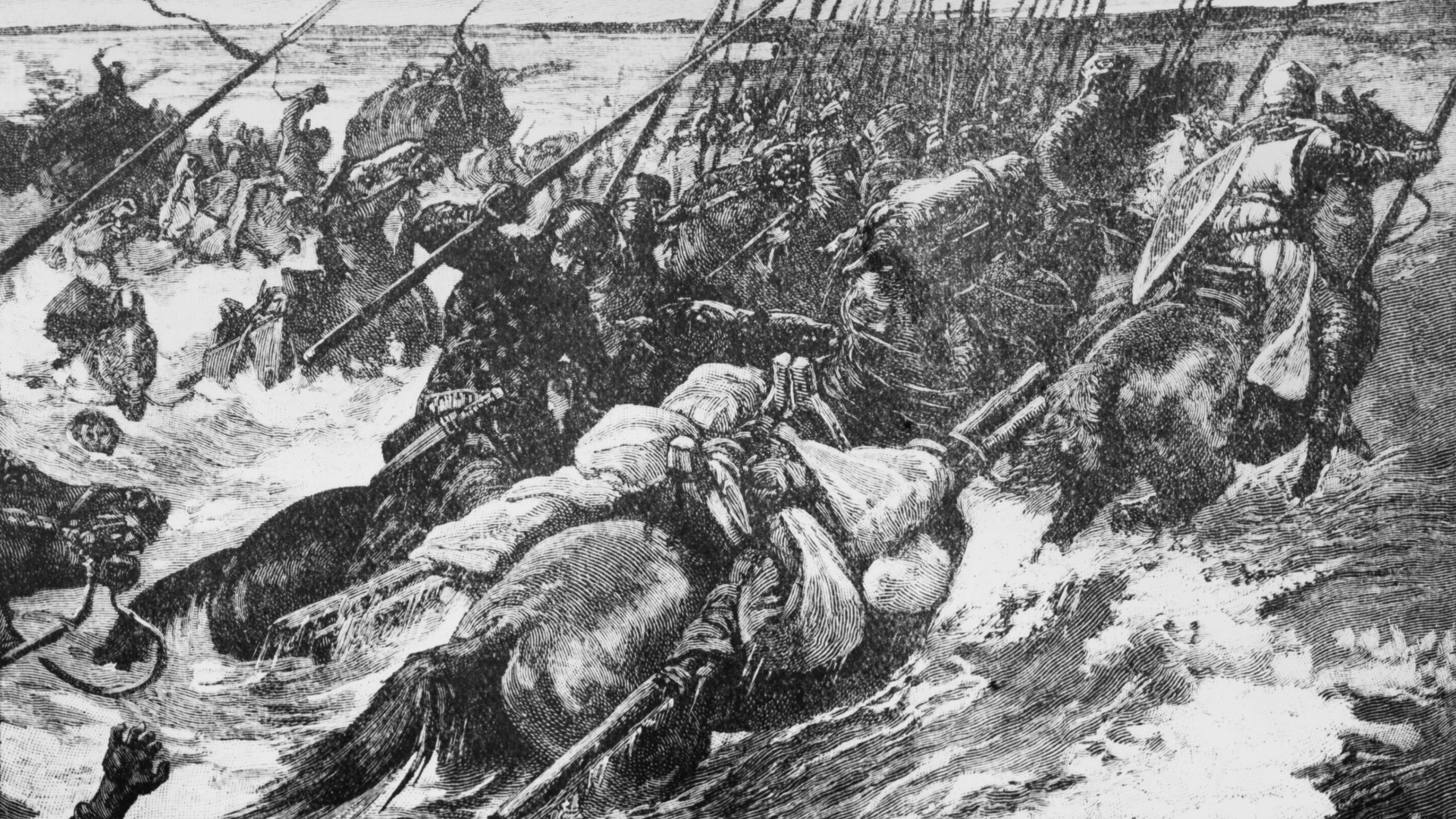
Having reneged on his deal with the barons, John was quickly met with civil war, a series of events that likely "blackened forever the name of the ruling King John," according to Jones. The conflict, called the First Barons' War, raged from 1215 to 1217 with the barons led by Robert Fitzwalter. They brought Prince Louis, the son of Philip II of France, to England in 1216 to claim the throne and he was proclaimed King of England in London, although he was not crowned.
"The war dragged on into 1216 and was only ended by John's ignominious death from dysentery at the height of a thunderstorm whilst staying at Newark Castle. One more colorful account of his death stated that John was 'personally summoned to hell by the Devil'," wrote Barratt.
John had been heading to Lynn in Norfolk in Sept. 1216 when he contracted cru, traveling to Newark Castle in Nottinghamshire before becoming too ill to travel further. He died on Oct. 19. His son, Henry, was named as his successor and was crowned on Oct. 28, 1216 having only recently marked his ninth birthday.
The legacy left behind by John, King of England, was largely shaped by the contemporary historians. The most prominent, an English Benedictine monk named Matthew Paris, famously referred to him as a "tyrant rather than a king," according to the British Library, in recounting how the lords of England felt about their monarch. It is this depiction that went on to inspire many of King John's appearances in popular fiction, such as Robin Hood.
"Over the centuries, the legend of Robin Hood grew to incorporate John, a king who epitomised tyranny and oppression, as Robin's enemy. In truth, the earliest written stories of Robin Hood name the king as 'Edward'," wrote Jones.
Additional resources
Richard the Lionheart is best known for his exploits in the Third Crusade and his clash with Saladin, who you can read much more about as well.
For more crusader stories, look no further than our in-depth explanation of the Knights Templar and their role in the numerous conflicts.
Bibliography
- "The Restless Kings: Henry II, His Sons and the Wars for the Plantagenet Crown" by Nick Barratt (Faber & Faber, 2019)
- "King John: England, Magna Carta and the Making of a Tyrant" by Stephen Church (PAN, 2016)
- "King John: An Underrated King" by Graham E. Seel (Anthem Press, 2012)
- "In the Reign of King John" Dan Jones (Apollo, 2020)
- "Magna Carta: Muse and Mentor" Library of Congress
- "King John: New Interpretations" edited by S. D. Church (Boydell Press, 1999)
- "Portrait of King John from Matthew Paris's Historia Anglorum" British Library

Jonathan is the Editor of All About History magazine, running the day to day operations of the brand. He has a Bachelor's degree in History from the University of Leeds. He has previously worked as Editor of video game magazines games™ and X-ONE and tech magazines iCreate and Apps. He is currently based in Bournemouth, UK.
